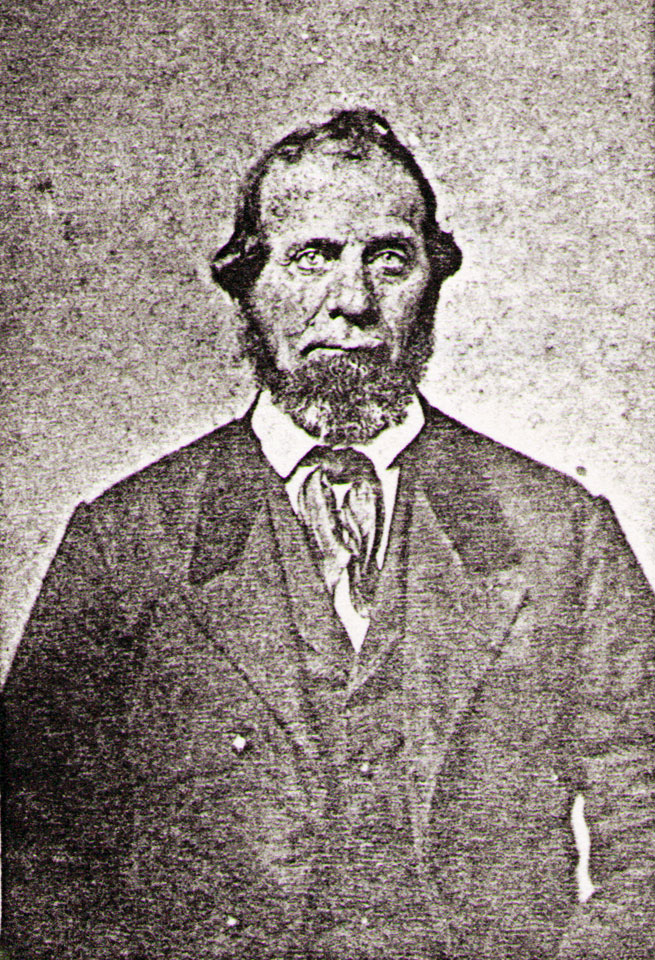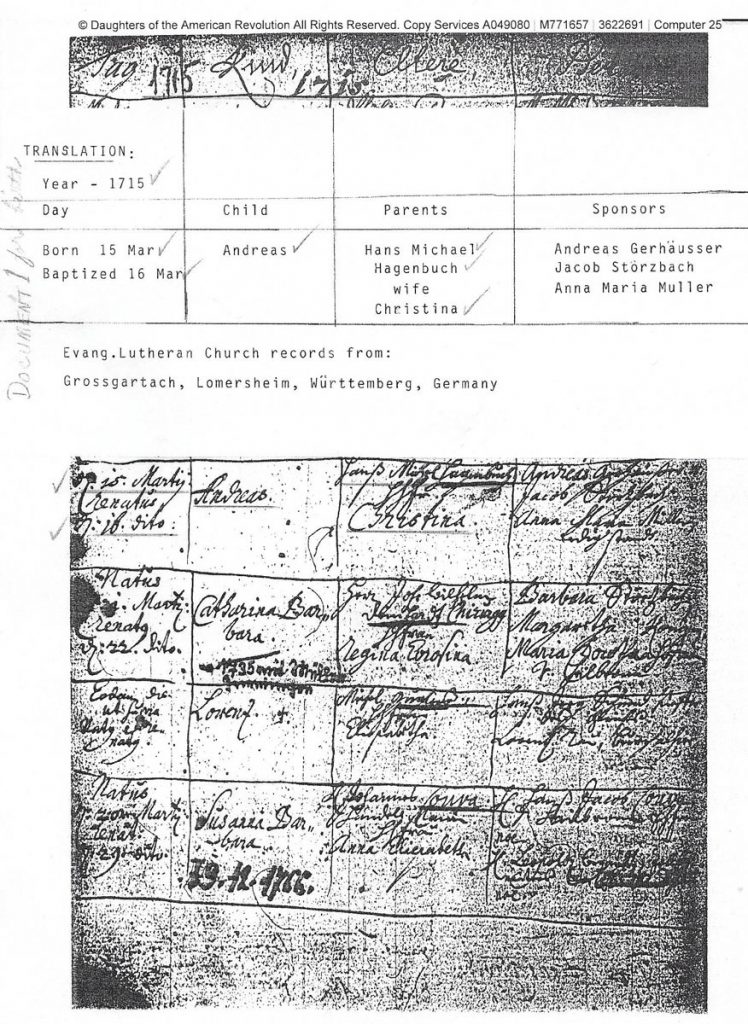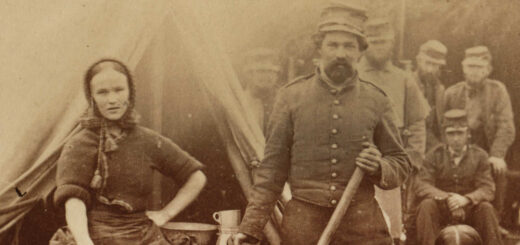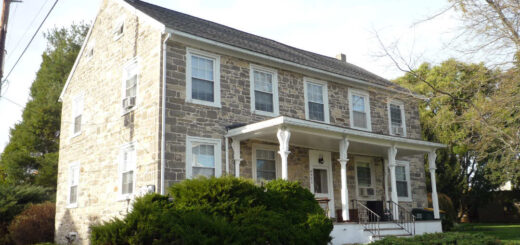Andreas Hagenbuch’s Debatable Birthdate
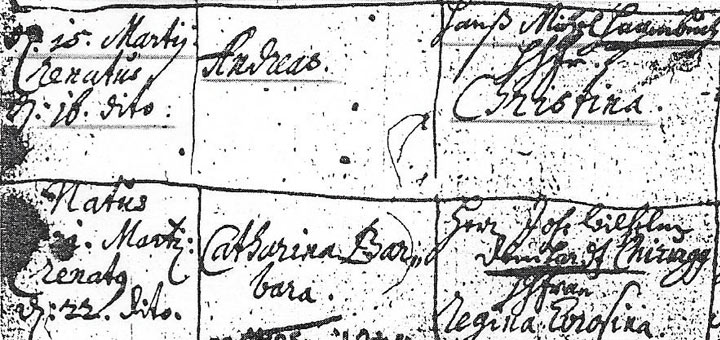
Most Hagenbuchs living in America are descended from Andreas Hagenbuch who arrived in Philadelphia in 1737. Yet, for all we know about Andreas, his exact date of birth has remained the subject of much debate.
On Hagenbuch.org my father, Mark Hagenbuch, and I have stated that Andreas Hagenbuch was born on April 19, 1711 near Lomersheim in the Kingdom of Wurttemberg, Germany. Because no gravestone for Andreas has ever been discovered, our source for this is Enoch Hagenbuch’s History of the Hagenbuchs in America. In his 1884 history of the family, Enoch clearly writes of his great grandfather:
The first Hagenbuch who landed in America was ANDREW [Andreas] HAGENBUCH. He came from the Kingdom of Wurtemburg, Schwabenland, Germany in the year 1737…. He was born the 19th of April, 1711. No record is left to tell when he departed from this life.
It should be noted that a second, longer version of Enoch’s work references a slightly different birth date of the “29th of April, 1711.” Neither copy held in the Hagenbuch family archives is an original, so either date could be correct.
Enoch’s history includes many other names and dates which have been verified thanks to church records and gravestones. That said, the document does contain some notable errors. For example, Enoch mentions that Michael was Andreas’s youngest son and states that Andreas arrived in America during June of 1737. To the contrary, we know that John was Andreas’s youngest son and that Andreas arrived in Philadelphia in late September of 1737 when the Charming Nancy made landfall.
Older genealogy books tend to support the notion that Andreas Hagenbuch was born in April of 1711 in Wurttemberg, although they mention a different day: April 11th. We have been unable to find a citation supporting where April 11th originally came from, raising concerns about its validity.
To recap, there exist three possible dates for Andreas Hagenbuch’s birth:
- April 11, 1711
- April 19, 1711
- April 29, 1711
While differing on the day of month, the above dates provide reasonable support to the idea that Andreas was born during April of 1711. Nevertheless, not all genealogists agree.
In 1936, Ruth Rinkenbach compiled her notes on the Hagenbuch family. Within these, she listed Andreas’s birthdate as “circa 1715” likely meaning it was an educated guess on her part.
While an educated guess isn’t much of a fact, this birth year has been gaining ground on sites such as Ancestry.com. Modern researchers point to copies of church records that are on file with the Daughters of the American Revolution (DAR).
The church documents—written in German—show that an Andreas Hagenbuch was born on March 15, 1715 and baptized a day later on March 16th in the Evangelical Lutheran Church of Grossgartach, Lomersheim, Wurttemberg, Germany. His parents were Hans Michael and Christina Hagenbuch. The baptismal sponsors were Andreas Gerhausser, Jacob Storzbach, and Anna Maria Muller.
Genealogists connect this birth and baptism to the Andreas Hagenbuch who arrived in Pennsylvania in 1737. This is done through a church marriage record from April 26, 1737 which shows that an Andreas Hagenbuch, son of Hans Michael (who is noted as recently deceased), married Maria Magdalena Schmutz, the daughter of Jacob Schmutz in Schluchtern, Lomersheim, Wurttemberg, Germany.
According to the passenger lists from the Charming Nancy, Andreas Hagenbuch arrived in Philadelphia with his wife, Magdalena Hagenbuch. If this is the Maria Magdalena mentioned in the April 26, 1737 marriage record, then it would appear that Andreas’s father was Hans Michael and that Andreas was likely born on March 15, 1715. Seeing that church records, such as baptisms and marriages, are primary sources for information, it would seem that Enoch’s birth date for his great grandfather was wrong.
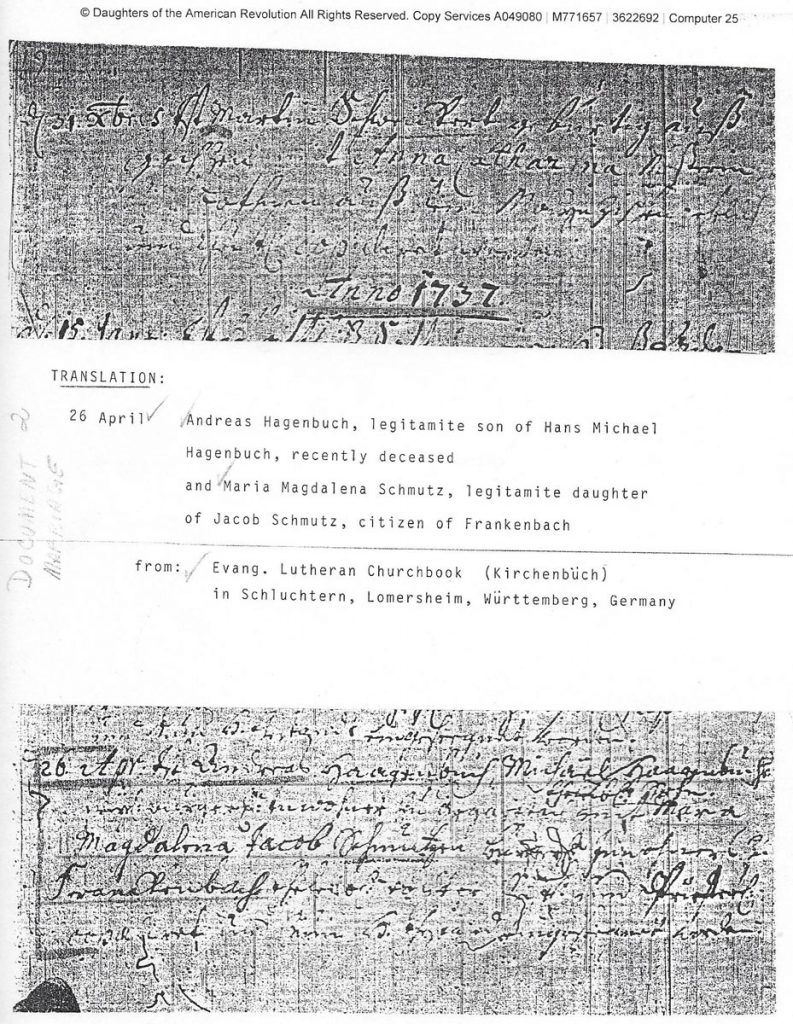
Copy of church records showing Andreas Hagenbuch’s second marriage date as April 26, 1737. Credit: DAR
Yet, my father and I have been skeptical of the new date for several reasons. First, Enoch was only a few generations removed from Andreas Hagenbuch, and he had been born less than 30 years after Andreas died. The family almost certainly held Bibles noting specific birth dates and locations, which should have been correct.
Second, Andreas’s eldest son Henry was born in 1736 to his first wife, Catherine. What this means is that an Andreas born in 1715 would have married at the age of 19 or before. Researchers suggest that by the 18th century men and women in western Europe were typically first married in their mid-20s. Supporting this trend, Andreas’s sons Henry, Michael, Christian, and John were all married in their mid to late 20s. Though couples younger than this did marry, these cases were the exception and not the rule.
Third, we know that families often had numerous relatives with the same name. For instance, Andreas had a son and three grandsons all named John Hagenbuch who were born within a few decades of one another. So, the Andreas who was born in 1715 could possibly be a different Andreas from the one who left for America in 1737.
When I began to write this article, I expected to conclude by stating that my father and I would continue to support the fact that Andreas Hagenbuch was born on April 19, 1711. However, after weighing the evidence and discussing the evidence at length, we now feel strongly that the birth, baptism, and marriage records from Lomersheim are more reputable than Enoch’s birthdate for Andreas. This is at least in part due to the verifiable errors in Enoch’s work.
As a result, we now believe that Andreas Hagenbuch was born on March 15, 1715, and from this point forward or until other facts are presented, we will use this birth date when referring to him. Though contrary to the western European tradition of marrying in one’s 20s, a younger Andreas whose father died shortly before he left for America, opens up new avenues of discussion and further helps us to understand the early Hagenbuch family.

